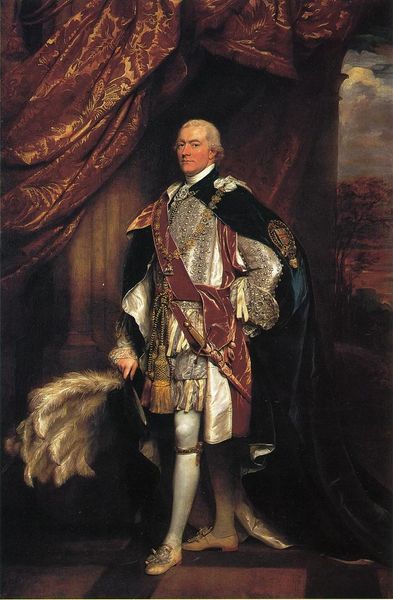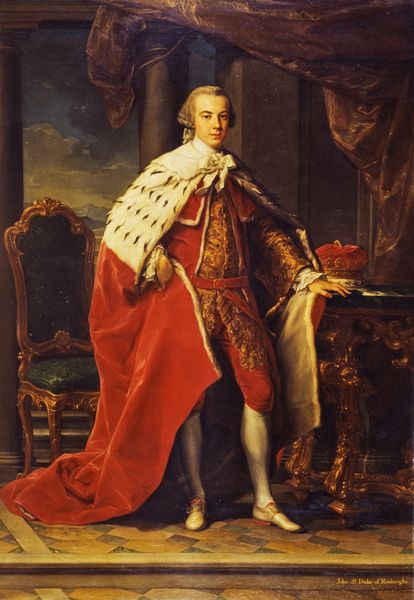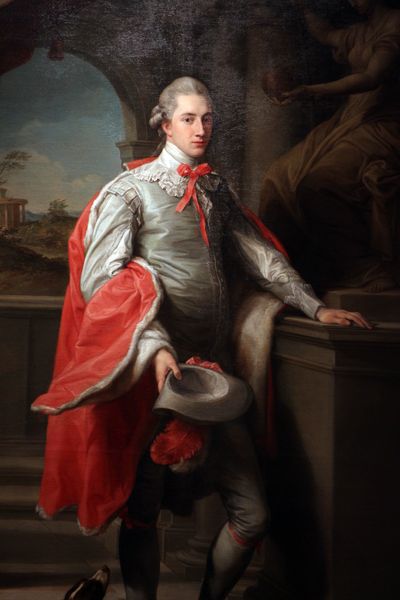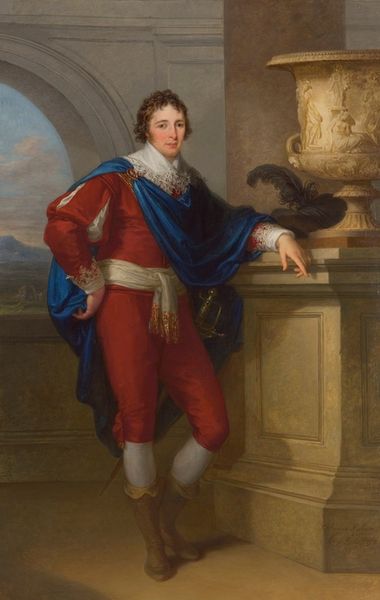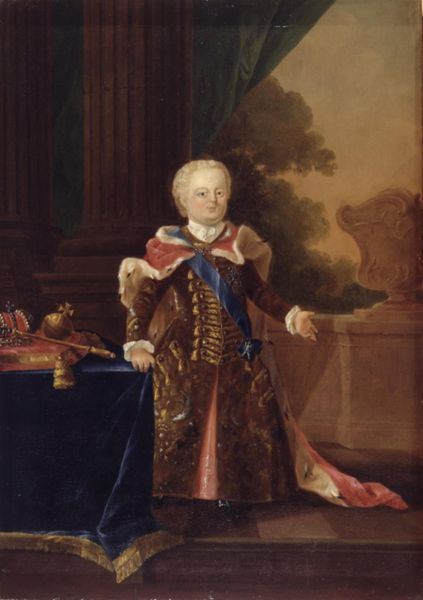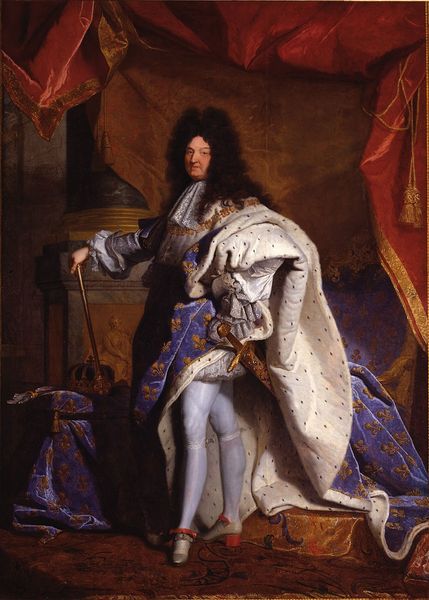
painting, oil-paint
#
portrait
#
neoclacissism
#
painting
#
oil-paint
#
figuration
#
oil painting
#
romanticism
#
history-painting
#
academic-art
Copyright: Public domain
Curator: Here we have John Hoppner’s “Portrait of George IV, when Prince of Wales,” rendered in oil on canvas in 1796. Art Historian: Oh, he's quite the sight, isn't he? Rather full of himself, if you ask me. There’s such blatant showmanship in every brushstroke, a symphony of royal arrogance. Curator: Showmanship, perhaps. But look at how Hoppner structures the composition. The cool blues and reds in his robe offset the creamy whites and lavenders of his attire and complexion, creating visual balance. He contrasts the naturalism of the landscape backdrop with the rigid architecture of the column behind Prince George to establish visual harmony. Art Historian: Harmony masking historical reality! This is Prince George at the height of his excesses. A man who would become infamous for his extravagance during a period of great social inequality in Britain. It’s propaganda. He’s staging himself next to Roman architectural motifs to evoke parallels of power and legitimate rule! Curator: You can interpret it as staging, I see something interesting happening formally between the textures of paint used for rendering Prince George's apparel. See the way his velvet cloak contrasts sharply with the feathery texture of the hat in his hand, or the shimmering brushwork on his decorative regalia? There is textural opulence at play. Art Historian: Absolutely, this excess is calculated, reflecting the lavishness of his lifestyle. Hoppner was smart to give him some kind of grounding and depict the naturalistic landscape—which certainly would remind many onlookers of land and property ownership. Curator: Whether through texture, balance or tone, the material choices all subtly contribute to a cohesive whole. You cannot deny that! Art Historian: True, John Hoppner was cementing the prince’s position using accessible artistic techniques. His artistic and cultural importance would outlive Prince George's reputation. Well, it gives you pause to think about it, doesn’t it? Curator: It’s a wonderful exercise to study these arrangements as we have. It lets you see what choices make it… well, “work” or “not work."
Comments
No comments
Be the first to comment and join the conversation on the ultimate creative platform.
